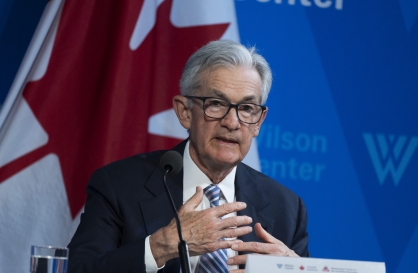With a thaw in inter-Korean relations raising expectations for possible infrastructure projects in the North, concerns are growing over decreasing budgets set aside to build and refurbish social overhead capital in the South.
It is still too early to discuss economic cooperation with North Korea as there remain many hurdles to its denuclearization that would be rewarded with the lifting of international sanctions on the impoverished regime.
It is still too early to discuss economic cooperation with North Korea as there remain many hurdles to its denuclearization that would be rewarded with the lifting of international sanctions on the impoverished regime.

If the North would eventually take steps to scrap its nuclear arsenal to focus on economic development, it could open the way for South Korean companies to participate in projects to develop transportation, energy and other infrastructure facilities needed to rebuild its crumbling economy.
A report from the Financial Services Commission put the cost of infrastructure development in the North at an estimated $139.2 billion.
State-run and private lending institutions are now cautiously undertaking reviews of how to help meet the hefty financial demand.
The rising interest in the North’s infrastructure construction contrasts with diminishing budgets allotted to build and refurbish railways, roads, bridges and ports in the South.
Budget planners have cut expenditures on social overhead capital in the past few years, saying South Korea has sufficient SOC stock, or infrastructure.
The SOC budget, which recorded an on-year increase of 4.7 percent in 2015, decreased 4.5 percent in 2016, 6.8 percent in 2017 and 14 percent in 2018.
Under a five-year fiscal management scheme worked out in 2016 by former President Park Geun-hye’s government, infrastructure spending was to be reduced by an annual average of 6 percent from 26.1 trillion won ($24.4 billion) in 2015 to 18.5 trillion won in 2020.
The reduction is set to be made at a far faster pace under President Moon Jae-in’s administration, which has been trying to secure funds to implement its lavish welfare and employment programs.
“There is an understanding within this administration that infrastructure-related budgets should be minimized except for inevitable spending,” said an official at the Ministry of Strategy and Finance, asking not to be named.
The Moon administration plans to cut infrastructure spending by an annual average of 7.5 percent over the coming years to 16 trillion won by 2021.
According to the Construction Association of Korea, funding shortages have delayed or suspended scores of infrastructure projects, including those to build roads and railways, around the country.
Experts warn that a continuous decline in infrastructure investment will deteriorate the country’s unemployment problem.
Official data show the number of employees in the construction sector slid from 2.03 million in December last year to 1.97 million in March.
The on-year increase in the number of people hired by construction firms remained at 207,000 in the first quarter of this year, less than half the figure for the same period of last year.
According to the Construction and Economy Research Institute of Korea, more than 80,000 jobs are expected to disappear over the four years through 2019 if SOC investment is cut as planned by the government.
Lee Sang-ho, head of the research institution, said the government needs to increase infrastructure spending not only to bolster employment but to shore up growth and enhance welfare.
“Reducing infrastructure spending drastically below a proper level contradicts policy efforts to create jobs, boost growth, enhance balanced regional development and improve income inequality,” he said.
The CERIK estimates that spending an additional 442 trillion won on 1,244 key infrastructure projects selected by it around the country except for Seoul over the coming eight years would result in creating 197,400 jobs annually. Household income and private consumption are projected to rise by 6.96 trillion won and 4.97 trillion, respectively, each year over the cited period, with the economy growing by an additional 0.85 percentage points annually.
Experts note judgment on the sufficiency of a country’s SOC stock can differ depending on what standards are used for international comparison.
For example, South Korea ranks high among Group of 20 major economies in terms of the combined length of roads per territory but its ranking sinks to near the bottom in per capita length.
The planned cut in infrastructure investment also turns a blind eye to the need to refurbish aging facilities in the country.
In Gangwon Province bordering the North, nearly 70 percent of roads have already passed their endurance periods.
Experts say demand for SOC improvement would increase sharply in the coming years as the endurance period of decadeslong infrastructure facilities here comes to an end.
Park Soo-jin, a researcher at the CERIK, estimated the reinvestment needed for existing infrastructure facilities would amount to 53.4 trillion won in 2016-2025 and 118.2 trillion won in 2026-2035. In the 10 years following, the sum was projected to further rise to 300.3 trillion won.
Experts say the country needs a new strategy for infrastructure investment, which could help enhance the efficiency of the economy and make better preparations for a new wave of industrial renovations.
They note a sharp cut in government spending on infrastructure would result in funding indispensable projects with private capital, which could lead to increasing burdens on people’s livelihood in various forms of usage fees.
By Kim Kyung-ho (khkim@heraldcorp.com)
A report from the Financial Services Commission put the cost of infrastructure development in the North at an estimated $139.2 billion.
State-run and private lending institutions are now cautiously undertaking reviews of how to help meet the hefty financial demand.
The rising interest in the North’s infrastructure construction contrasts with diminishing budgets allotted to build and refurbish railways, roads, bridges and ports in the South.
Budget planners have cut expenditures on social overhead capital in the past few years, saying South Korea has sufficient SOC stock, or infrastructure.
The SOC budget, which recorded an on-year increase of 4.7 percent in 2015, decreased 4.5 percent in 2016, 6.8 percent in 2017 and 14 percent in 2018.
Under a five-year fiscal management scheme worked out in 2016 by former President Park Geun-hye’s government, infrastructure spending was to be reduced by an annual average of 6 percent from 26.1 trillion won ($24.4 billion) in 2015 to 18.5 trillion won in 2020.
The reduction is set to be made at a far faster pace under President Moon Jae-in’s administration, which has been trying to secure funds to implement its lavish welfare and employment programs.
“There is an understanding within this administration that infrastructure-related budgets should be minimized except for inevitable spending,” said an official at the Ministry of Strategy and Finance, asking not to be named.
The Moon administration plans to cut infrastructure spending by an annual average of 7.5 percent over the coming years to 16 trillion won by 2021.
According to the Construction Association of Korea, funding shortages have delayed or suspended scores of infrastructure projects, including those to build roads and railways, around the country.
Experts warn that a continuous decline in infrastructure investment will deteriorate the country’s unemployment problem.
Official data show the number of employees in the construction sector slid from 2.03 million in December last year to 1.97 million in March.
The on-year increase in the number of people hired by construction firms remained at 207,000 in the first quarter of this year, less than half the figure for the same period of last year.
According to the Construction and Economy Research Institute of Korea, more than 80,000 jobs are expected to disappear over the four years through 2019 if SOC investment is cut as planned by the government.
Lee Sang-ho, head of the research institution, said the government needs to increase infrastructure spending not only to bolster employment but to shore up growth and enhance welfare.
“Reducing infrastructure spending drastically below a proper level contradicts policy efforts to create jobs, boost growth, enhance balanced regional development and improve income inequality,” he said.
The CERIK estimates that spending an additional 442 trillion won on 1,244 key infrastructure projects selected by it around the country except for Seoul over the coming eight years would result in creating 197,400 jobs annually. Household income and private consumption are projected to rise by 6.96 trillion won and 4.97 trillion, respectively, each year over the cited period, with the economy growing by an additional 0.85 percentage points annually.
Experts note judgment on the sufficiency of a country’s SOC stock can differ depending on what standards are used for international comparison.
For example, South Korea ranks high among Group of 20 major economies in terms of the combined length of roads per territory but its ranking sinks to near the bottom in per capita length.
The planned cut in infrastructure investment also turns a blind eye to the need to refurbish aging facilities in the country.
In Gangwon Province bordering the North, nearly 70 percent of roads have already passed their endurance periods.
Experts say demand for SOC improvement would increase sharply in the coming years as the endurance period of decadeslong infrastructure facilities here comes to an end.
Park Soo-jin, a researcher at the CERIK, estimated the reinvestment needed for existing infrastructure facilities would amount to 53.4 trillion won in 2016-2025 and 118.2 trillion won in 2026-2035. In the 10 years following, the sum was projected to further rise to 300.3 trillion won.
Experts say the country needs a new strategy for infrastructure investment, which could help enhance the efficiency of the economy and make better preparations for a new wave of industrial renovations.
They note a sharp cut in government spending on infrastructure would result in funding indispensable projects with private capital, which could lead to increasing burdens on people’s livelihood in various forms of usage fees.
By Kim Kyung-ho (khkim@heraldcorp.com)








![[Today’s K-pop] BTS pop-up event to come to Seoul](http://res.heraldm.com/phpwas/restmb_idxmake.php?idx=644&simg=/content/image/2024/04/17/20240417050734_0.jpg&u=)
![[Graphic News] More Koreans say they plan long-distance trips this year](http://res.heraldm.com/phpwas/restmb_idxmake.php?idx=644&simg=/content/image/2024/04/17/20240417050828_0.gif&u=)






![[KH Explains] Hyundai's full hybrid edge to pay off amid slow transition to pure EVs](http://res.heraldm.com/phpwas/restmb_idxmake.php?idx=652&simg=/content/image/2024/04/18/20240418050645_0.jpg&u=20240419100350)

